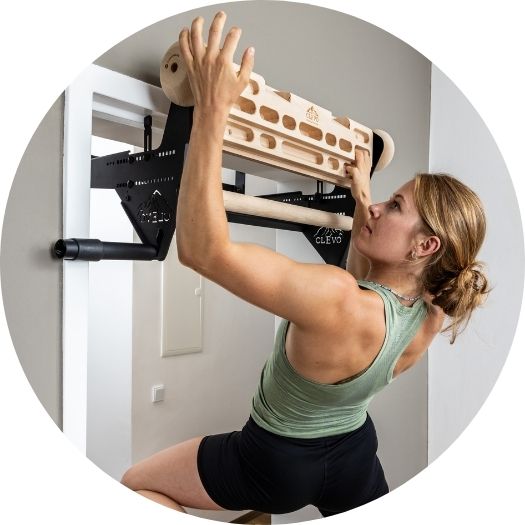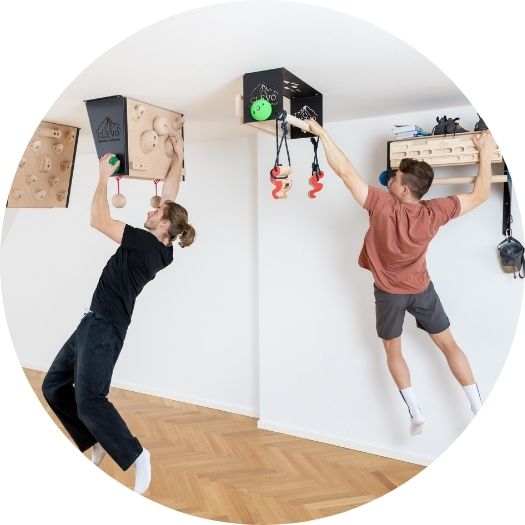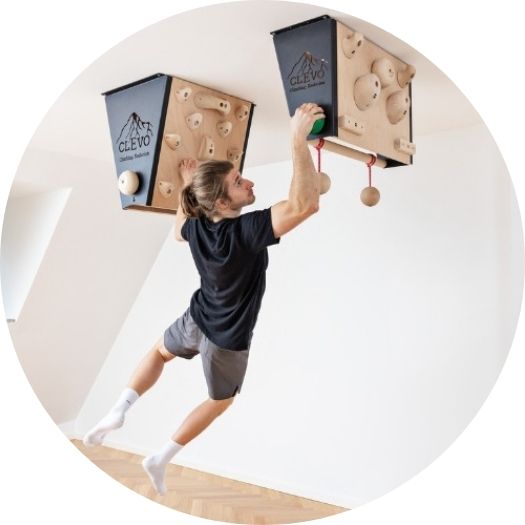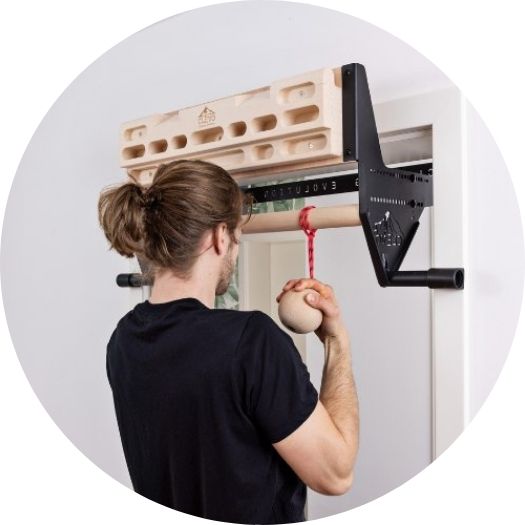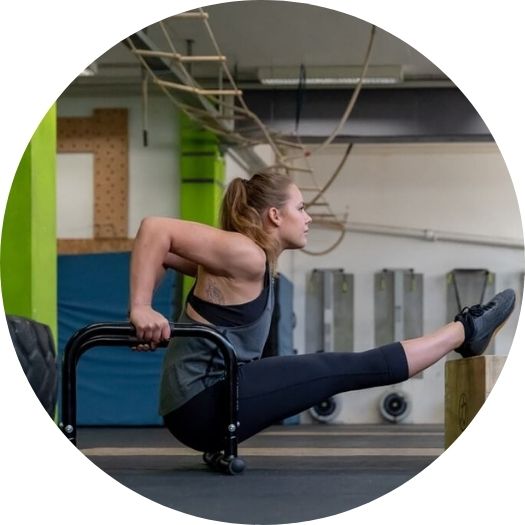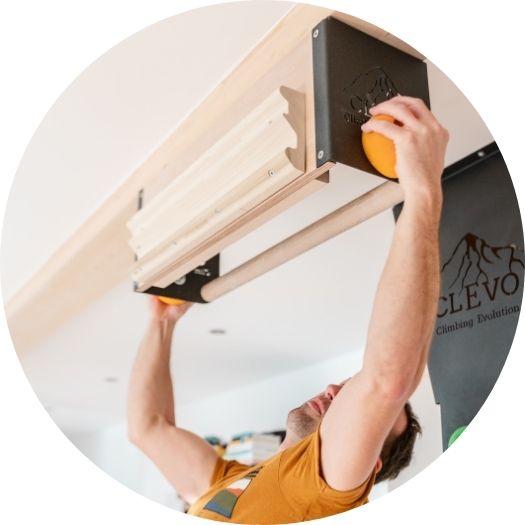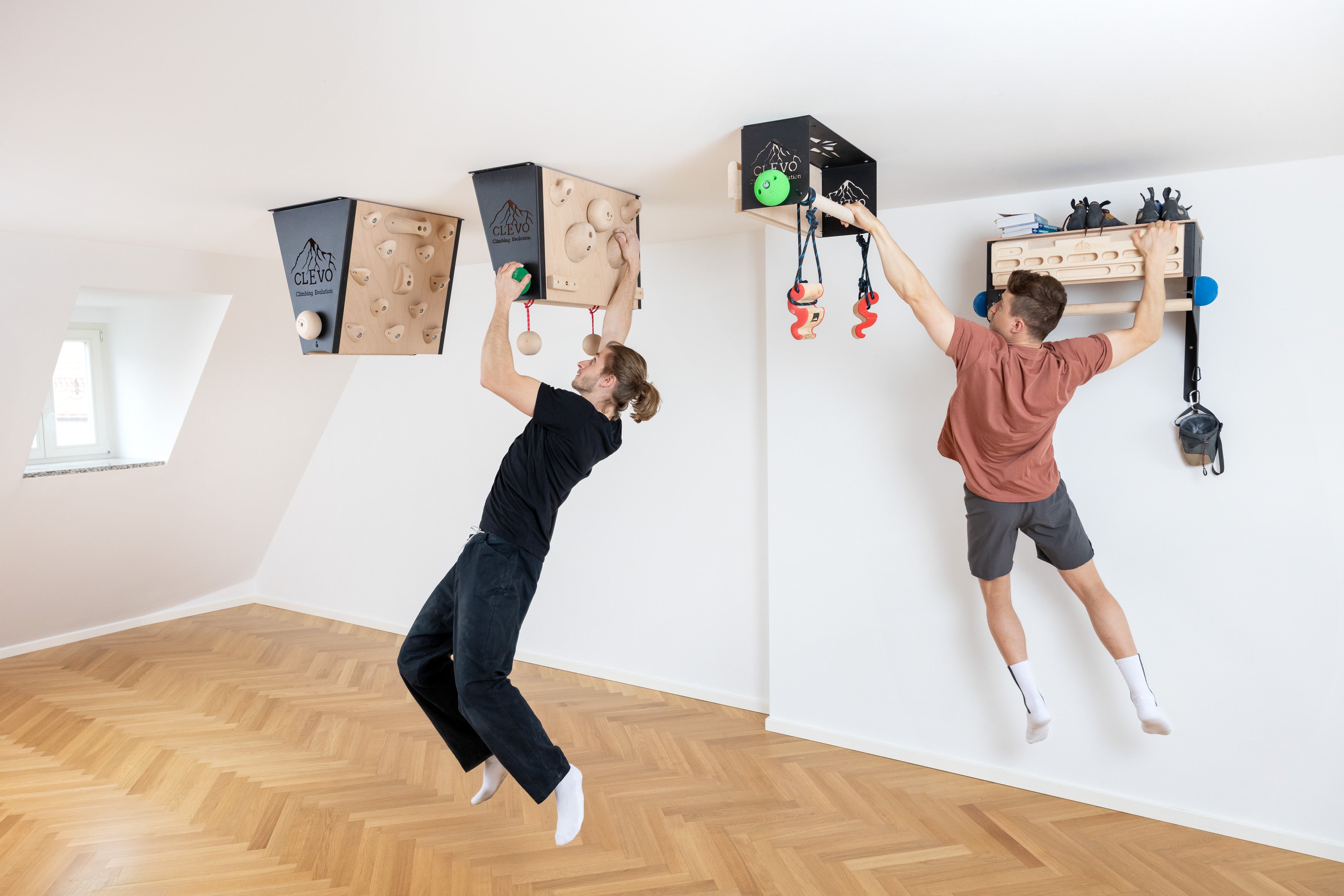What even is grip strength?
Grip strength is the ability to use your finger and forearm muscles to hold on to an object as tightly as possible or to keep an object in the air for as long as possible working against gravity.
As a climber, it helps you to hold on to ledges, slopers and holds and master your route. Especially in dynamic climbing or on overhangs, grip strength determines whether you can hold a move or have to let go, but of course it also plays a decisive role on small ledges. It is closely linked to body tension and technique - the better you grip, the more efficiently you climb.
But even if you don't want your grip strength to be the limiting factor in heavy strength exercises, it would make sense to integrate this type of specific training into your workout routine.
In this article, you will find out how you can effectively improve your grip strength, which exercises will really benefit you and what you should pay attention to during training and recovery.
Why is grip strength so important?

Grip on hangboard module
When you're climbing, it's usually all about getting a good grip!
And what do you need to be able to do this effectively? - Grip strength,of course !
Your grip strength is the heart of your climbing performance - without it, you won't stay on the wall for long, which is why it often determines the success or failure of a route. Especially if you already have some experience, many athletes find that they reach a plateau at some point, even though they train regularly. You get to the point where you have the feeling that no matter how often you go to the gym, no progress is visible.
Areyou wondering why that might be?
It's often grip strength that limits progress. Because without sufficient strength in your fingers, hands and forearms, even the best technique won't get you any further at some point.
Whether bouldering, sport climbing or classic strength training: if you train your grip strength specifically, you will improve your technique, endurance, strength and self-confidence in equal measure.
What are the benefits of grip strength training?
Targeted grip strength training has numerous benefits - not only for climbing enthusiasts, but also for anyone who wants to improve their general strength and performance.
Grip strength training helps you to prevent injuries by strengthening the structures in your wrists, fingers and forearms. Of course, this mainly benefits you on the climbing wall and reduces the risk of injury. In an already high-risk sport such as climbing or bouldering, this is of course an additional benefit that you can take advantage of. You become more stable and robust - especially at stress points that are often overstressed in sport. In addition, it improves your athletic performance not only in the gym, but also in pulling exercises such as pull-ups, rowing or deadlifts.
It also gives you more confidence on the wall. If you often have the problem of not trusting your hand when holding a grip, you won't have much confidence in your grip strength. You may even develop a fear of falling off the wall. To counteract this, you can specifically train your grip strength and thus ensure that you have more fun climbing without worrying about falling.
Types of grip strength
To give you a basic overview of the different types of grip and how grip strength is broken down, we have created a brief overview of the individual types of finger and grip strength here.
|
Crushing grip strength with grip trainer
|
Crushing grip strength (crushing): The force required to squeeze tightly, for example when squeezing a plasticine ball or a grip trainer |
|
Wrist strength: The force required to hold the wrist in place and support the fingers in doing so, for example when performing dumbbell exercises such as bicep curls. |
Wrist strength with dumbbells |
|
Thumb strength with weight plate |
Thumb strength (pinching): Force required to hold an object between the thumb and the other fingers, such as with a weight plate. |
|
Finger strength (individual finger strength): The strength required in each individual finger. It tends to be used for specific sports, such as holding onto a pocket grip when bouldering. |
Finger strength with a hangboard |
|
Holding force on the pull-up bar |
Holding force (support grip): Strength required to hold a grip position for an extended period of time, such as when hanging from a pull-up bar. |
What are the best exercises for improving grip strength?
Find out what you need to bear in mind for this type of workout and which exercises are the best for taking your grip strength to a new level below!
The hangboard is the most effective tool for use at home and offers numerous variation options for training grip and holding strength thanks to the different grips.
|
Training on the hangboard |
🌱 Beginners: Use the larger handles; hold for 7 seconds, pause for 3 seconds for 5 sets.
🌳Advanced: Max hangs (10 seconds on small bars with additional weight).
🧩Variations: Crimp, open grip, one-arm hangs. |
Dead hangs on the pull-up bar
Grab the pull-up bar with both hands, hang down and actively engage the shoulder.
|
Hanging on the pull-up bar |
🌱 Beginner: Wide shoulder grip; hold between 10-30 seconds for 3-5 sets.
🌳 Advanced: Max hangs; hanging with additional weights; towel over pull-up bar and hold on to it.
🧩Variations: Lock-off (hold at 90° arm angle, one-arm deadhangs) |
3. Kneading ball and grip trainer
Repeated squeezing of a ball or grip trainer to strengthen the forearm muscles. This type of grip strength training is perfect for on the go or as a warm-up and is also ideal for regeneration and mobilization.
|
Hand with grip strength trainer |
🌱 Beginners: Use simple resistance; 20-25 repetitions, 2-3 sets.
🌳 Advanced: Increase the number of sets; reduce break times; use higher resistance.
🧩Variations: Use stronger trainers or wider grip.
|
4. Hold weights / hold weight plates
Hold a set of weight plates (as wide as possible) for as long as you can by gripping them from above and pinching the plate with your thumb on one side and the rest of your fingers on the other.
You can also hold dumbbells/kettlebells in both hands (farmer's hold) or hold and walk (farmer's carry).
This also trains the core muscles, i.e. your entire body center, which of course also benefits you on the wall.
|
Holding a weight plate |
🌱 Beginners: Take a light weight; hold for 10-30 seconds and 2-3 sets.
🌳 Advanced: increase the weight; also move with the weight (simultaneous core and core training).
🧩Variations: Use Fattgrip handles, increase weights
|
+ bonus tips for recovery:
Grip strength training - especially training on the hangboard - is a strain on the fingers, tendons and capsules that should not be underestimated and should either be trained on a single day or at the start of a training session. You also need to give the structures in your hand and forearm enough time to fully recover. Depending on the intensity of the session, this can be 48 hours or longer.
Another plus point: By putting additional strain on small muscle groups, grip strength training also supports muscle development in the fingers and forearms and thus provides more functional strength in everyday life. Whether you're carrying shopping bags, holding heavy tools or lifting your children - you'll notice the difference!
What can we learn from this?
Good grip strength is not a product of chance - it can be built up with the right training. With tools such as our hangboard or the CLEVO door module with pull-up bar and hangboard in one, you can make your training easier, train effectively from home and measurably increase your progress. Our modules are just as variable as you are - you can configure the model to suit your needs and add additional bars or extra handles, for example.
Invest in your performance and get ready to rock your next project on the wall!

